Helmed by Francis Lawrence, ‘The Long Walk’ adapts Stephen King’s eponymous novel to tell the story of an endurance race with a sinister premise. In a dystopian setting, a group of young men take on a bold challenge: they must walk, endlessly, at the minimum speed of three miles per hour. However, the race is designed to double as a culling game, and failure to meet the criteria results in immediate execution. Given that the victor is only decided when there’s a single participant left, all the walkers decide to put their lives on the line.
With every step, the threat gets increasingly real and more potent, and all the characters are forced to confront their darkest fears. Whether they stop or keep moving forward becomes the central question of this dystopian survival horror movie. As the entire story is set on the road, its filming process is inextricably tied to its storytelling, making room for all forms of creative endeavours.
The Long Walk Filming Locations
‘The Long Walk’ was filmed primarily in the province of Manitoba, with many of its cities, towns, and rural communities playing a part. While much of the shooting took place in Winnipeg, portions were also lensed at Garson, Portage la Prairie, and St. Lazare. Production commenced in July 2024 and concluded approximately in September of the same year. The first week of August saw the crew filming on provincial roads, with period stoppages taking place for the smooth flow of traffic. Additionally, a chunk of the film was also shot in the province of Saskatchewan. The decision to film in summer was specifically made in keeping with the movie’s premise, which involves the characters walking in broad daylight. As such, the summer season allowed for longer daylight hours and more time to film.
Winnipeg Metropolitan Region, Manitoba
For the production of ‘The Long Walk,’ the filming crew primarily set camp in the capital city of Manitoba, Winnipeg. The bustling landscapes of the region provided a sharp contrast with Garson, and the crew made the best use of its ample green spaces and vast urban expanses. As most of the film has its characters on foot, exterior shots took priority here, with the roadways and other silent locations coming into play to bring the movie’s setting to life. Additionally, Birds Hill Provincial Park, located 14 miles north of the capital, also served as a major lensing location. Located deep in the heart of the Boreal Plains ecozone, the park is inhabited by a wide assortment of flora and fauna, all of which adds to being the perfect backdrop for ‘The Long Walk.’
The natural scenery was featured to amp up the narrative stakes as well as contribute to the movie’s idea of a journey that is equal parts exhilarating and silent. Reportedly, shooting also took place in the rural municipality of Rockwood, with roads being temporarily closed off for the process. In particular, road stoppages took place over the course of two days, with August 1, 2024, observing film work on provincial roads 236, 83 North, and 5 East. The following day, provincial roads 323 Argyle, from road 1 East to Meridian road, were all closed off, with only locals being allowed access. This challenging task showed the creators’ commitment to the craft, with on-site filming taking precedence over set work.
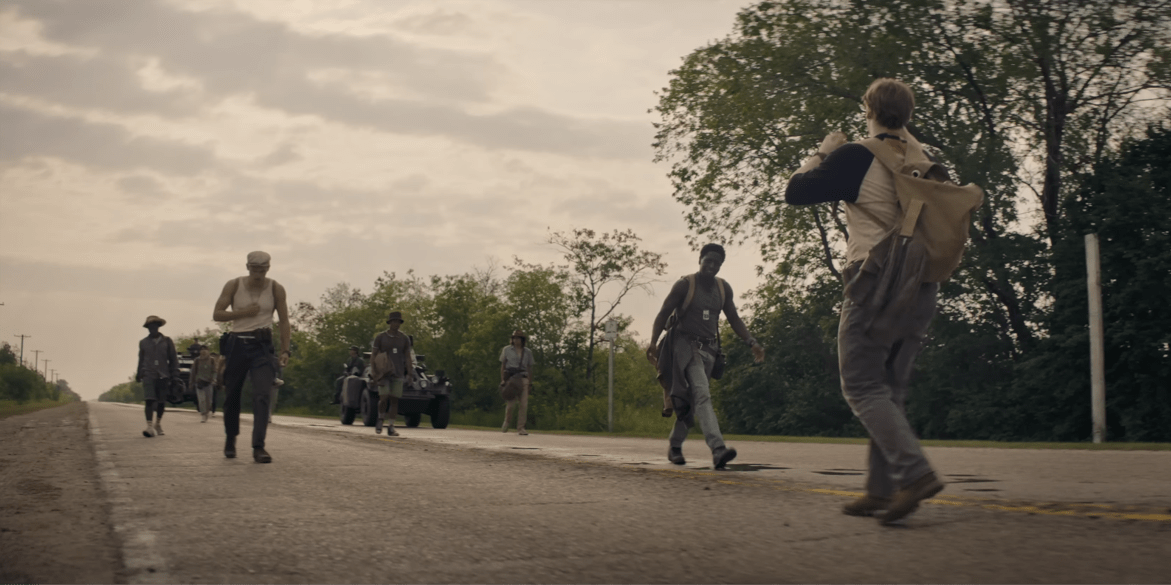
When asked about his experience of filming in Winnipeg, actor David Jonsson told Interview Magazine: “We found that this one bar that we’d go to, we’d have a pint there after a really hard day. And then on the weekend, we would do martinis. That was our thing.” He also spoke about the impact filming on location had on his performance, stating: “It massively helped (…) we had the luxury of shooting chronologically (and that matters) especially when you’re walking the whole time.” As such, the process of filming itself became a driving engine for the actors and crew, adding a layer of authenticity to the narrative as a whole.
Garson, Manitoba
A significant chunk of the film was also lensed in the city of Garson, situated around 28 miles north of Winnipeg. The town, which is known for its quaint aesthetic, became the perfect base for taping the long exterior sequences, many of which take place on roads. With fewer tourists, the crew also had an easier time managing their craft, which in turn helped in achieving the desired effect with every sequence. Garson features a mix of tight-knit residential communities and open green spaces, which are enhanced by the nearby natural and man-made structures, most popularly the limestone quarries. As such, the town provides an entire palette of exhilarating locations, many of which add to the movie’s visual identity.
Portage la Prairie, Manitoba
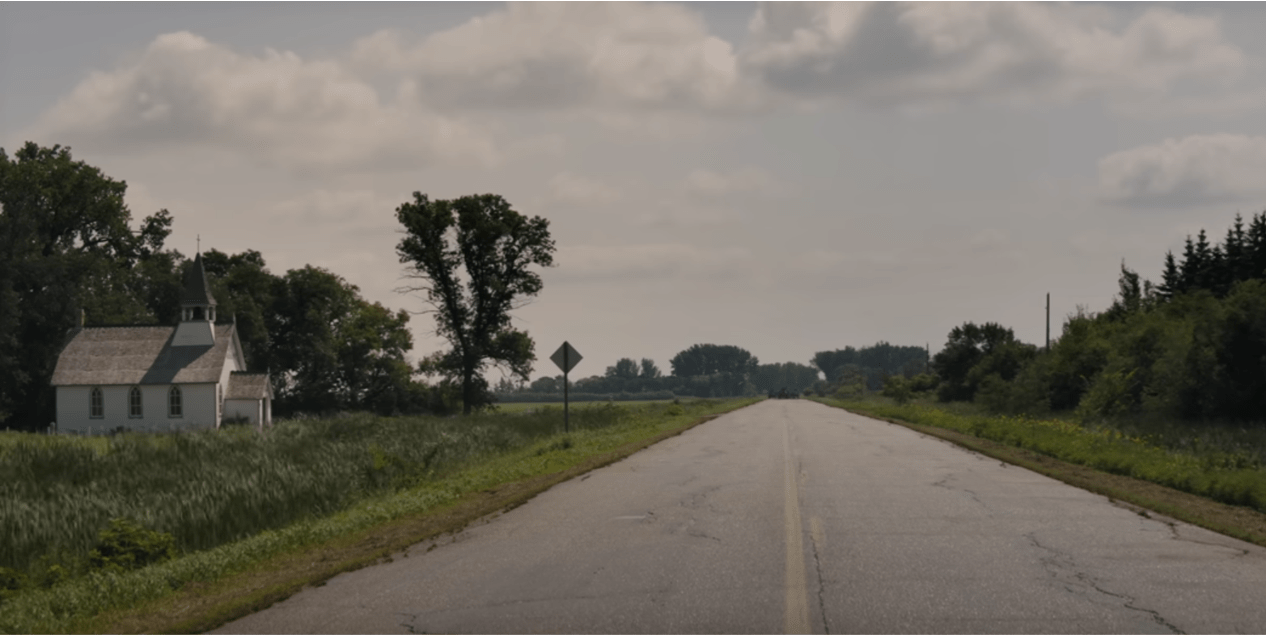
Some of the sequences were also captured in the city of Portage la Prairie, which houses Saint Paul’s Anglican Church, at 4813 Manitoba-26, east of Poplar Point. Built in 1910, the church has stood the test of time, having endured a fire hazard that led to its eventual reconstruction. It appears in the background of one of the sequences in the movie, thus grounding it in reality and adding some historical and cultural value to it. Reportedly, the scene was filmed in three days, and special attention was given to the unique nature of the church and the surrounding nature. As such, a trolley trailer was used to tape the scenes without any damage to the place and its surroundings. Additionally, the crew also donated to the church to show their respect and gratitude. Despite being a short scene, Saint Paul’s church leaves a memorable impact, enriching world-building.
St. Lazare, Manitoba
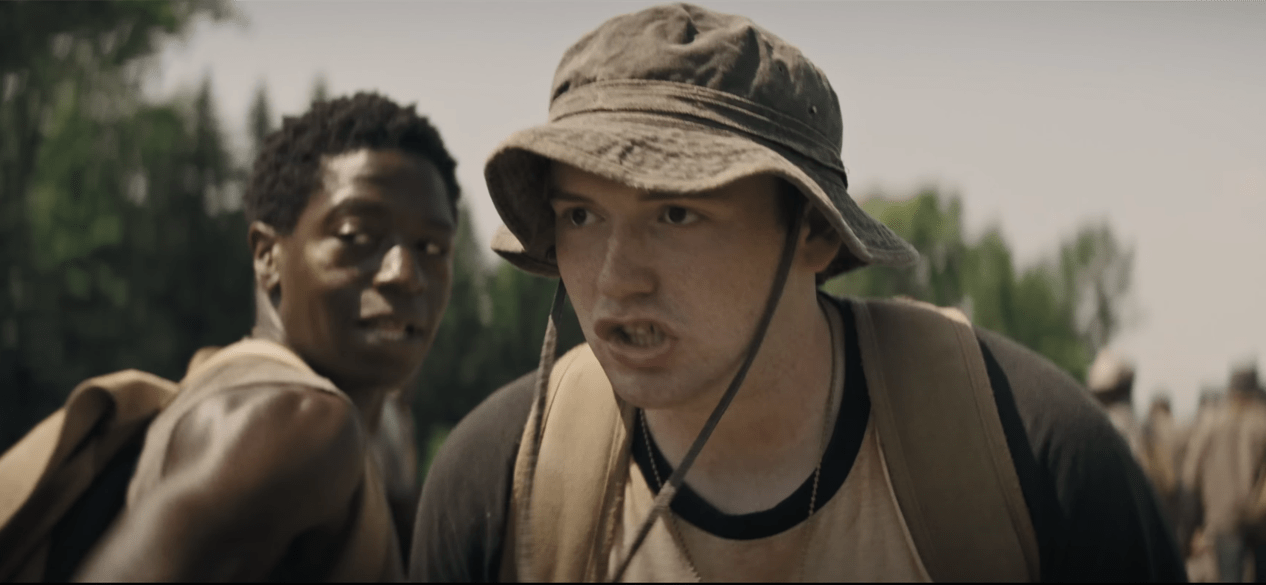
The filming also extended to the town of St. Lazare, located in the Rural Municipality of Ellice–Archie. This francophone town is known for its blend of natural beauty and a rich history. In particular, the site known as Fort Elice, located a mere 2 miles from the center, serves as the region’s backbone, having served as Hudson’s Bay Company’s trading outpost in the 1800s. As is the case with the rest of the filming locations, St. Lazare adds to ‘The Long Walk’ with its ample walking spaces, which let characters dive straight into the feel of the movie with minimal augmentations needed. In addition, the place’s lush expanses, along with its lakes and tree cover, all added to the ambience, letting its other elements shine through.
Saskatchewan
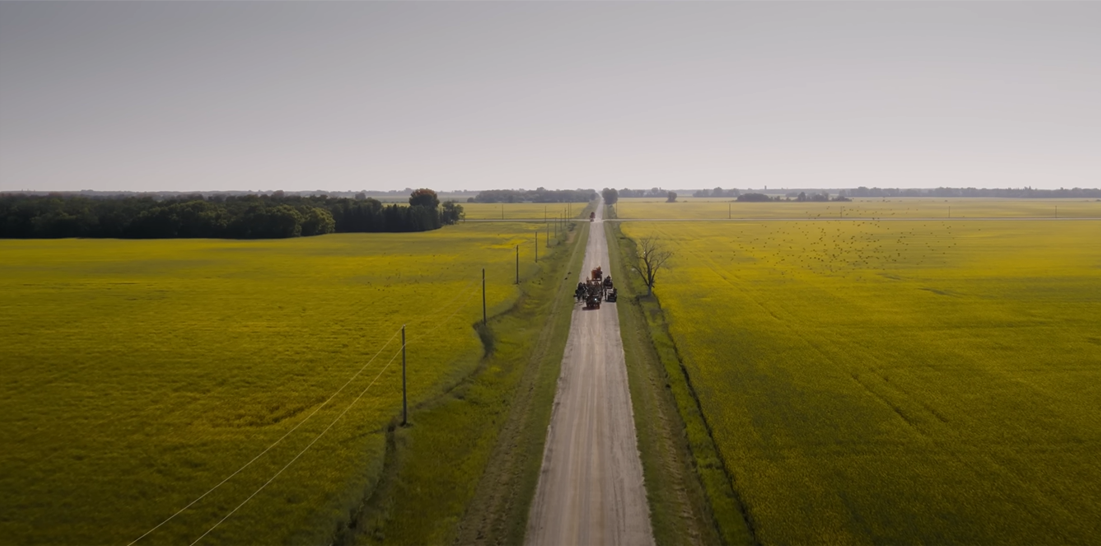
A portion of the movie was also lensed in the province of Saskatchewan, with a local on Reddit claiming that the crew set camp there sometime in August 2024. The province brings along with it a mix of grassland expanses and rocky terrains, which fell in line with the demands of the creative team. Actors David Jonsson and Mark Hamill had their own anecdotes about the time spent in the region, with the former stating in an interview with The Direct: “At one point, we were out in Saskatchewan, we were staying in huts, like the circle of huts. It was like a ski resort. It was the middle of summer, and it felt like a little summer camp. It felt like we were out on some sort of adventure.” Hamill likely referenced the same establishment in his conversation with The Hollywood Reporter, where he recalled a group dinner that was cancelled to retain the mental essence of the characters and their complicated dynamics.

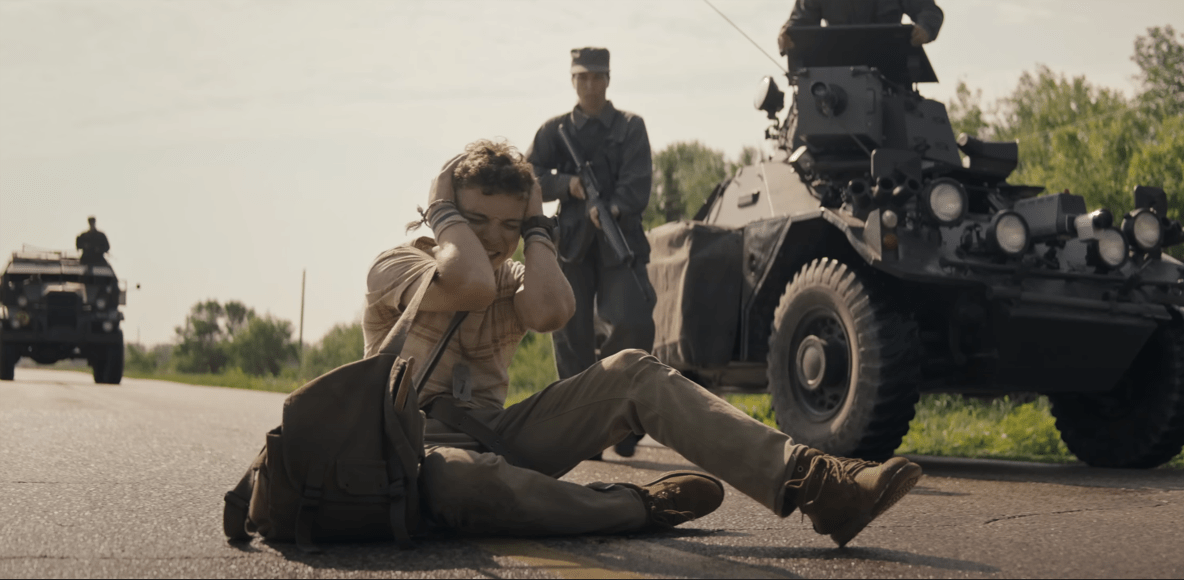
You must be logged in to post a comment.